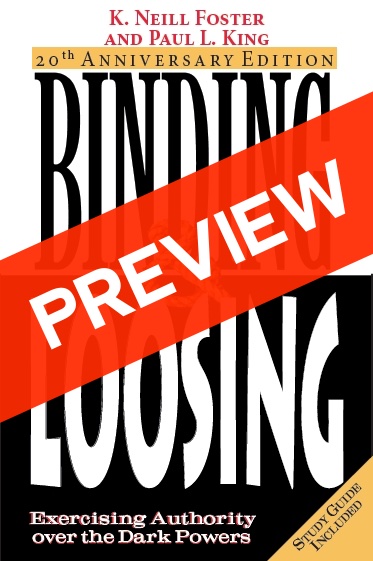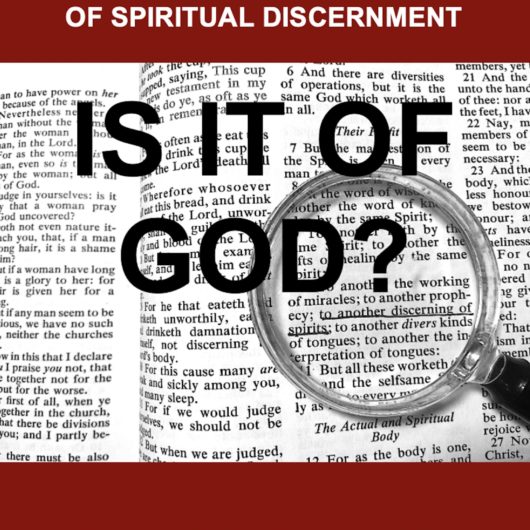After a hiatus of a few years because of an incredibly busy schedule, I am starting to blog again, introducing my newest book Is It of God? A Biblical Guidebook for Spiritual Discernment. Here is a summary of 8 principles from Chapter 2:
Spiritual discernment is a bit like driving a car. We need to learn when to press down the accelerator, apply the brakes, or continue to move forward with alertness and caution. The illustration of approaching a traffic light while driving helps to picture the process of discernment: Green Light means Go. Red Light means Stop; go no farther. A yellow light means slow down and get ready to stop. A blinking yellow light means proceed with caution, looking in all directions.
Eight biblical principles of discernment help us to know whether to press on the gas, press on the brakes or proceed forward with caution. These are based on the acronym DISCERNS:
DISCOVER BIBLICAL PRECEDENT. Is the teaching, practice, or manifestation found in Scripture? (2 Tim. 3:16-17). Do any biblical commands, principles, or examples clearly question or condemn this teaching, practice, or manifestation? This is an automatic red light. Do any biblical commands, principles, or examples permit or sanction this teaching, practice, or manifestation? This may be a green light, but it also may be a blinking yellow light that requires looking in all directions for further confirmation of two or more Scriptures or other witnesses (2 Cor. 13:1). If we do not have a green light from clear scriptural precedent, then we need to proceed with a blinking yellow light caution by exercising the other discernment principles that follow.
INVESTIGATE FOR SCRIPTURAL HARMONY—If no biblical precedent can be found, we need to be a Berean (Acts 17:22), examining closely and asking: is this teaching, practice or manifestation in harmony with Scripture? Proceed with a blinking yellow light, looking in all directions and prepared to stop (Red light!), if found to be not in harmony with Scripture; green light, if found to be in harmony with Scripture.
It is important to discern between “un-biblical” and “not biblical.” “Unbiblical” is a teaching, practice, or manifestation that contradicts or compromises, takes away from, or adds to (Deut. 4:2; Prov. 30:5-6), or goes outside the bounds of Scripture(1 Cor. 4:6), making Scripture insufficient for salvation and truth—Red light! “Not-biblical” means not found in the Bible (Blinking Yellow Light). Just because it does not appear in the Bible does not automatically mean it is wrong (such as Sunday school, youth groups, terms like Trinity and rapture, etc.). Much that is genuinely of God is not found in Scripture (John 20:30-31; 21:25). We must be careful not to condemn what Scripture does not condemn (Luke 9:49-50). We proceed with caution, looking in all directions.
On the other hand, just because it does appear in the Bible does not mean it is automatically always OK.
We need to be careful not to confuse normal with normative. Some things in the Bible are unique and not precedent-setting. Some things could be repeated, but are rare in the Bible (stilling the storm, protection from poisonous food or snake bites, being caught up to the third heaven, use of prayer cloths for healing, resurrections from the dead, walking on water, turning water into wine, etc.)
SCRUTINIZE FOR SOUND DOCTRINE. Is this teaching, practice, or manifestation consistent with sound biblical theology, interpretation, and/or practice? Is it accurate use of Scripture (2 Tim. 2:15)? Is it sound teaching in agreement with what Christ taught (1 Tim. 6:3)? Is it in accord with teachings handed down from the apostles (2 Thess. 2:15: 3:6; 1 Cor. 11:2)? (Green light). Does it compromise the deity or humanity of Christ? the virgin birth of Christ? the atoning blood of Christ? the resurrection of Christ? the authority of Scripture? The reality of heaven and hell? the Trinity? Salvation by grace through faith? (Red light!)
CONFIRM WITH EXPERIENCE. Is this teaching, practice, or manifestation confirmed from real life experience (Mark 16:20; Heb. 5:14)? Doctrine is not merely theoretical; it is confirmed by examples from life. If the experience is in harmony with Scripture—green light; maybe—blinking yellow light; no—red light.
EXAMINE THE FRUIT. Does teaching, practice, or manifestation bear good fruit(Matt. 7:16-18)? Is Jesus Christ lifted up and glorified? Does it edify spiritually? Are people saved and/or lives transformed? Does it bring people closer to Jesus? Does it build godly character? Does it edify? Yes—green light; maybe—blinking yellow light; no—red light.
RECEIVE SUPERNATURAL DISCERNMENT. Pray for the gift of discerning of spirits to shed light (1 Cor. 12:8, 10; Col. 3:15). The Holy Spirit often gives a witness or a check where Scripture says nothing. You know intuitively in your spirit—a sense a peace (green light) or lack of peace (yellow light or red light).
NOTE EXAMPLES AND LESSONS FROM THE PAST. Can we find similar precedent in teaching, practice, or manifestation in church history? (Heb. 11; 12:1; Jer. 6:16; Rom. 15:4; 1 Cor. 10:11). Yes, if in harmony with Scripture—green light; maybe—blinking yellow light; no—red light.
SIFT AND WEIGH FOR EQUILIBRIUM. Does this teaching, practice, or manifestation represent a biblical balance? Green light, if the answer is “Yes”; Red right if the answer is “No”; Yellow light, if one-sided, there are continuing questions, or the answers are mixed.
My newest book Is It of God? A Biblical Guidebook for Spiritual Discernment is available for purchase at www.paulkingministries.com



Leave a Reply